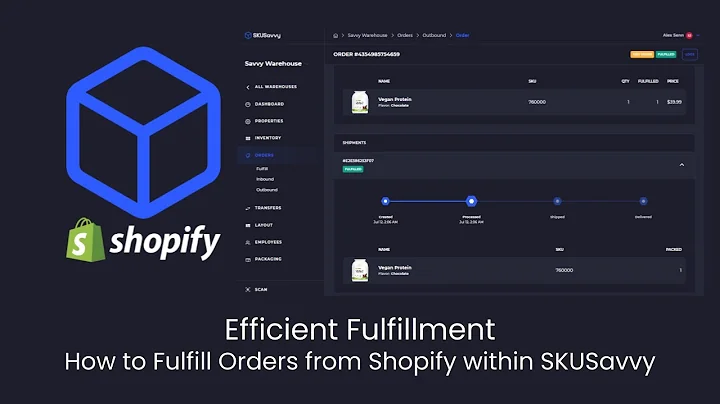A Comprehensive Guide to Unblock Google Merchant Center for Dropshipping
Table of Contents
- Introduction
- Step 1: Preparing Information in Merchant Center
- Checklist for merchant center approval
- Providing return and shipping page URL
- Implementing shipping speed
- Providing company information
- Step 2: Website Requirements for Merchant Center Approval
- Synchronizing product feed with Shopify
- Providing basic product information
- Avoiding over-promising language
- Avoiding fake trust indicators
- Not showing fake before and after results
- Avoiding false statements
- Checklist for Website Information
- Including company information in footer
- Having a contact page with address details
- Including multiple contact options
- Checking desktop and mobile menu
- Avoiding double links to landing pages
- Having legal pages (terms of service, shipping and return, contact, privacy policy)
- Showing legal pages in checkout
- Mentioning shipping information in checkout
- Having HTTPS certificate
- Ensuring mobile-friendly website
- Avoiding filler images
- Conclusion
How to Unblock Google Merchant Center for Dropshipping: A Comprehensive Guide
In this article, we will provide you with an exact framework that we use to unblock Google Merchant Center for dropshipping, as well as for our other e-commerce clients. We have successfully turned $47 into $150k for one of our dropshipping clients by overcoming the issues they faced with Google Merchant Center. We have compiled our knowledge into a checklist that will help you get your merchant center approved quickly.
Step 1: Preparing Information in Merchant Center
To get your merchant center approved, you need to have certain elements in place. Follow this checklist to ensure you have everything set up correctly.
-
Checklist for merchant center approval: Start by going to the gear icon and accessing the return step. Copy and paste the return and shipping page URL. This step ensures that Google has the necessary information regarding your return and shipping policies.
-
Implement shipping speed: Under the gear icon, go to the delivery section and set up your shipping speed. While longer shipping times may not be a problem, it is essential that the information on your website matches what you provide in the Google merchant center.
-
Provide company information: In the gear icon, navigate to the business information tab. Fill in as much business information as possible, ensuring that the order of address details in the footer matches the order required by Google. This will make it easier for Google's algorithm to detect and verify the information.
Step 2: Website Requirements for Merchant Center Approval
In addition to the information in the merchant center, your website also needs to meet certain requirements for approval. Follow these guidelines to ensure your website is compliant.
-
Synchronize product feed with Shopify: Install the YouTube and Google app on Shopify and connect your Gmail address. This will allow you to provide basic product information such as titles, prices, currency, GTIN, descriptions, colors, and sizes. The more information you provide, the better optimized Google can be to showcase your products.
-
Avoid over-promising language: It is crucial not to use language that over-promises what your product can do. Google can detect false claims, so be honest and accurate in your product descriptions.
-
Avoid fake trust indicators: Do not place badges or logos from news websites on your store to falsely build trust. Google can easily verify if you are featured in major publications, so it's best to avoid deceptive practices.
-
Avoid showing fake before and after results: If your products are related to medical or beauty needs, refrain from showcasing fake before and after pictures. Google can detect manipulated or photoshopped images, which may lead to account suspension.
-
Avoid making false statements: Especially in the medical and beauty industry, it is crucial not to make false claims about your products or services. Misleading information can result in your merchant center not being approved.
Checklist for Website Information
To ensure a smooth merchant center approval process, here's a checklist for the information you need to have on your website.
-
Company information in the footer: Follow the format discussed earlier and include the necessary company details. This information should match your business details in the merchant center.
-
Contact page with address details: Have a dedicated contact page on your website that includes the same address details as provided in the business information section of the merchant center.
-
Multiple contact options: Provide at least two contact options, such as a contact form or an email address. Having multiple options adds credibility to your website.
-
Check desktop and mobile menus: Double-check that your website's menu does not display duplicate links or elements. Google does not allow duplicate content, so ensure a smooth user experience by avoiding repetition.
-
Avoid double links to landing pages: If you have multiple buttons on your homepage, ensure that they do not lead to the same landing page. Using the same URL for multiple buttons may signal a poor user experience.
-
Legal pages: Include essential legal pages such as terms of service, shipping and return policies, contact information, and a privacy policy. These pages provide transparency and build trust with your customers.
-
Show legal pages in checkout: Display the legal pages, especially the shipping and return policies, during the checkout process. This ensures that customers have all the necessary information before completing their purchase.
-
Mention shipping information in checkout: Ensure that the shipping information in your merchant center matches the shipping details mentioned during the checkout process. Consistency is key to gaining approval.
-
HTTPS certificate: Obtain an HTTPS certificate to secure the traffic between your website and users. This ensures the privacy and safety of your customers' information.
-
Mobile-friendly website: With the majority of internet users accessing websites from mobile devices, it is crucial to have a mobile-friendly website. Ensure that your website is responsive and offers a seamless experience on mobile devices.
-
Avoid filler images: Remove any placeholder or filler images from your website templates. Google can detect these images, and using them may prevent your merchant center account from being approved.
By following these steps and checklists, you can avoid the majority of issues that hinder merchant center approval. If you're looking for more e-commerce advice, visit our YouTube channel, where we share our extensive knowledge gained from five years of experience. If you have any questions, feel free to reach out to us via direct message on Twitter. We wish you success in getting your merchant center approved!
Conclusion
In this comprehensive guide, we have provided you with a framework and checklist to unblock Google Merchant Center for your dropshipping business. By following the steps outlined and adhering to website requirements, you can increase your chances of getting your merchant center approved. Remember, providing accurate and consistent information is key to a successful approval process. Good luck, and may your merchant center be approved as soon as possible!
Highlights
- A framework and checklist to unblock Google Merchant Center
- Successfully turning $47 into $150k for a dropshipping client
- The importance of accurate and consistent information
- Checklist for merchant center approval
- Checklist for website requirements
- Tips for satisfying website information criteria
- Importance of legal pages and secure website features
FAQ
Q: Can I use over-promising language in my product descriptions to attract customers?
A: No, it is essential to avoid over-promising language as Google can detect false claims. Be honest and accurate in your product descriptions.
Q: Are fake trust indicators effective in building credibility for my store?
A: No, using badges or logos from news websites to create fake trust can harm your chances of approval. Google verifies the authenticity of such claims.
Q: Can I showcase fake before and after results for my beauty products?
A: No, Google can detect manipulated or photoshopped images. It is best to provide genuine and accurate representations of your products.
Q: Can I make false statements about my products to increase sales?
A: No, making false claims about your products is not advisable, especially in the medical and beauty industry. Honesty and transparency are crucial for a successful approval process.
Q: How important is it to have legal pages on my website?
A: Legal pages, such as terms of service, shipping and return policies, contact information, and privacy policies, are essential for building trust with your customers and meeting Google's requirements.
Q: Is having a mobile-friendly website necessary for merchant center approval?
A: Yes, having a mobile-friendly website is crucial as the majority of internet users access websites through mobile devices. Ensure a seamless experience for mobile users to increase your chances of approval.






















